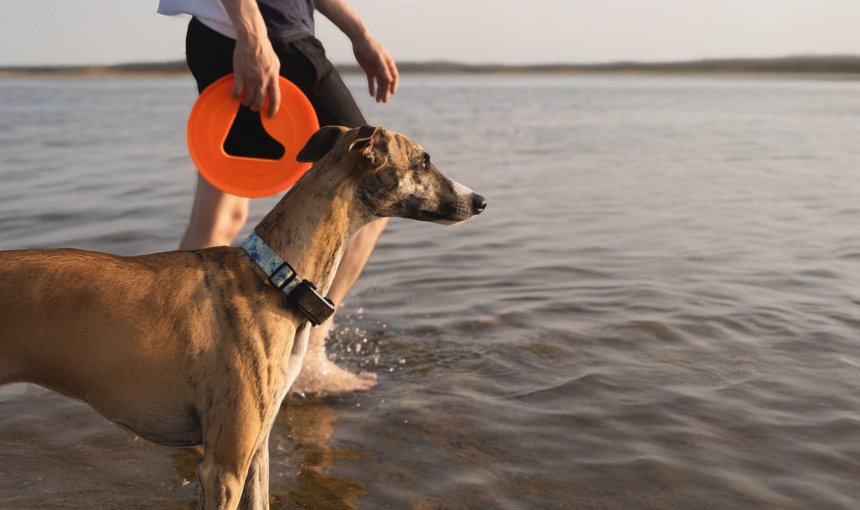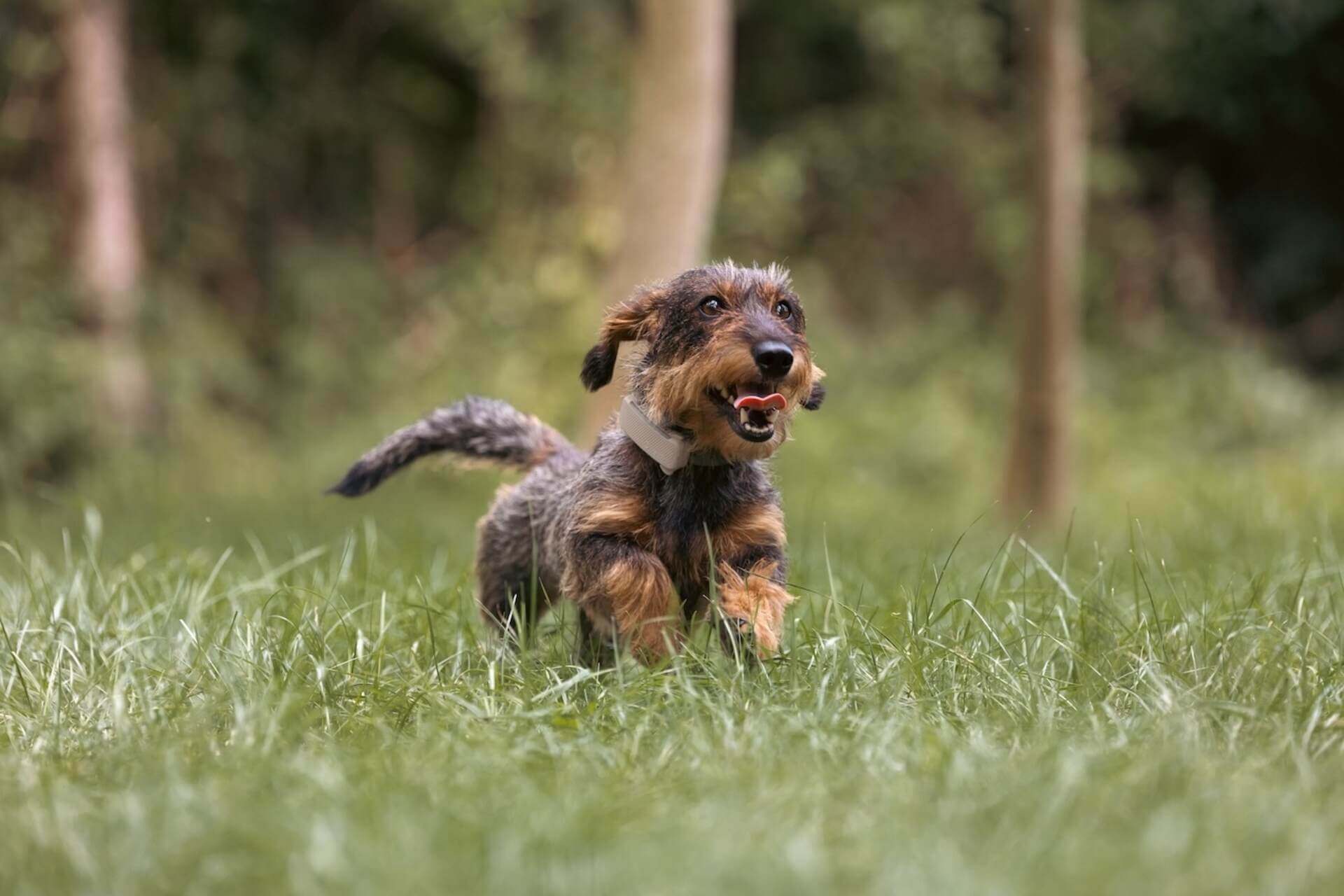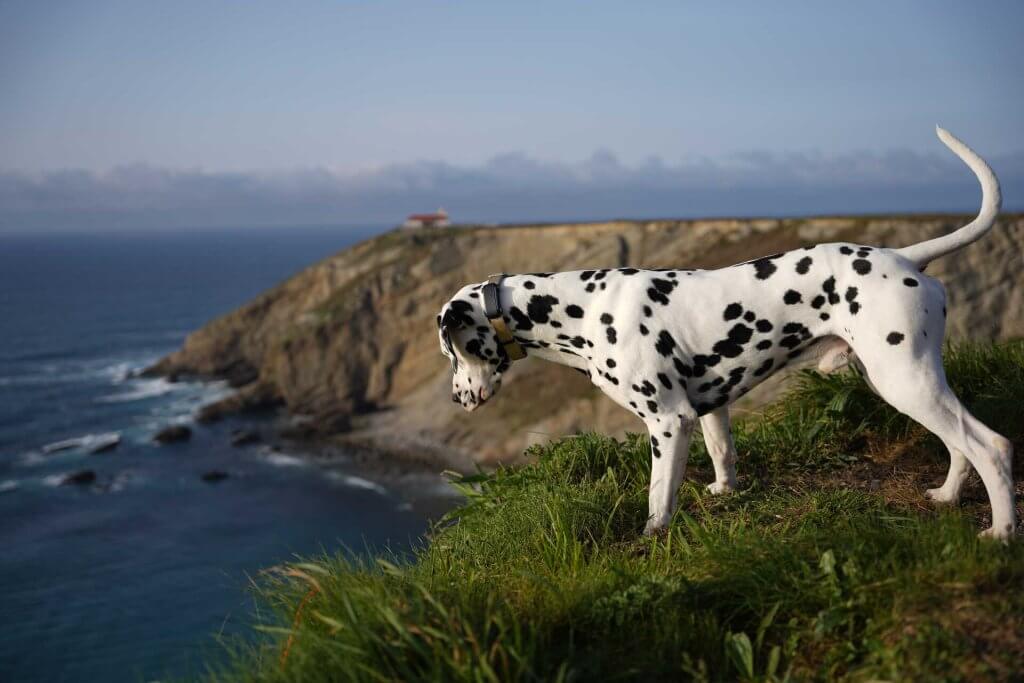Low Maintenance Dogs: 10 Chill Dog Breeds For Busy Folks
Low maintenance dogs are perfect for busy dog parents or if you live in an apartment. So here are 10 of the best we've gathered - and how to keep them happy & healthy.

You’ve heard of active, high-energy dog breeds, or dogs that are built for running, or dog sports like canicross and bikejoering. But what about chill dog breeds? Aka, low maintenance dogs for busy dog parents just like you. Here are 10 of them for dog parents who are busy, live in an apartment, or just need a bit more of a home-buddy.

Always know your buddy is healthy & safe
Read more10 best low maintenance dogs
Greyhounds
Boom – surprise! You wouldn’t be the first to think of Greyhounds as anything BUT one of the least chill dog breeds. But turns out, they’re actually way calmer and easier to manage than you might expect. With their easygoing temperaments, vets describe them as docile and easy to care for.
⚠️ Greyhounds tend to be a bit sensitive to stress and anxiety – especially noise anxiety. And with New Year’s round the corner, they might get spooked and even escape from home if you have, say, neighbors bursting fireworks or playing loud music. (Since fear is one of the key reasons why dogs run away.)
Dachshunds
The classic low maintenance small dog, Dachshunds are a great choice if you’re living in an apartment. With their friendly temperaments, they’re excellent family dogs and respond quickly if you train and socialize them to other people and pets early on. Here’s a rough-coated Dachshund wearing a Tractive GPS tracker for max safety:

⚠️ Dachshunds are small enough to get stuck in some small, hard to escape spot in your house. (Like an air vent or a wardrobe full of your heavy winter coats.) Where it can be difficult for you to hear them barking for help – or to escape.
Shiba Inus
Shiba Inus rank so high on the list of chill dog breeds, you can even invite them to join you on a yoga mat. (Sometimes literally.) They’re excellent indoor dogs who quickly adapt to living in an apartment and getting along with a family.3
Basset Hounds
Basset Hounds are a classic chill dog breed that also tend to live pretty long – over 10 years! They’re friendly and placid by temperament and get along well with families.4 But don’t be fooled by their relaxed appearance: these dogs were once bred for hunting down fast-moving prey animals, including hare.
Besides, Basset Hounds have among the best senses of smell among all dog breeds – with over 220 million nasal receptors.5 So you’ll find it smart to keep them physically and mentally active with a ton of scent games. (Like a scavenger hunt for their favorite toys!)
Whippets
Much like their cousins, the Greyhound, Whippets are a breed of medium-sized dogs that make perfect cuddle buddies. Friendly and sociable, they’re also known to be quite a resilient by temperament.6 (Which means they can handle stress a lot better than their bigger cousins.)
Whippets, do however, have a strong prey drive. They were historically bred to chase down smaller woodland animals – which, in an apartment, might just end up being your cat or a smaller dog. Keep your Whippet firmly on a leash when out walking outdoors.

Follow your dog anywhere
Get real-time location information, wherever they go. And find out when they try to make an escape, or just when they go somewhere they shouldn’t, with Virtual Fences.
Newfoundlands
Who says low maintenance dogs need to be teeny tiny? Newfoundlands are the perfect big, friendly, chill dog breed you need for both indoor and outdoor fun.
Originally bred as working dogs, they’re large, strong dogs that also tend to be quite calm temperament-wise. Importantly, Newfies tend to be aware of their big size. (So they’ll be quite careful around kids, smaller pets, and your older relatives.)
💡Because of their love of water, Newfoundlands are often trained as water rescue dogs. Actually giving them something in common with the Tractive GPS, which Search and Rescue (SAR) teams often use during water rescues.
Miniature Pinschers
Here’s a low maintenance small dog that’ll keep you on your toes: Miniature Pinschers! With their small size, they adapt excellently to apartments. However, with their high energy needs, your Min Pin needs a ton of exercise (and attention) to stay happy and healthy. Which makes regular exercise a priority for Miniature Pinschers.
Papillons
An elegant little dog that also manages to be one of the chill dog breeds, Papillons are a great choice for first-time dog parents. Much like Basset Hounds, they also tend to be long-lived – up to 12-16 years. In fact, little Papillons were once bred as companion animals for European noblewomen!9
Papillons are intelligent, highly-trainable, and eager to please. So keep them occupied with a fun, practical training method like clicker training. (Which is built on positive reinforcement – and can help deepen your bond.)
Yorkies
Friendly, affectionate, and even a little bossy – Yorkshire Terriers are another excellent family dog. Much like Min Pins, they’re as feisty as they’re tiny and need a ton of room to run around and play. (Whether indoors or outdoors.) Yorkies take well to living in apartments, but they do need a ton of mental stimulation to prevent them from getting bored.
Dalmatians
And wrapping up: here’s Dalmatians – another low maintenance dog breed that’s great for first-time dog parents. They’re generally easy to train, love being around kids, and love a balance of indoors and outdoors time.11




